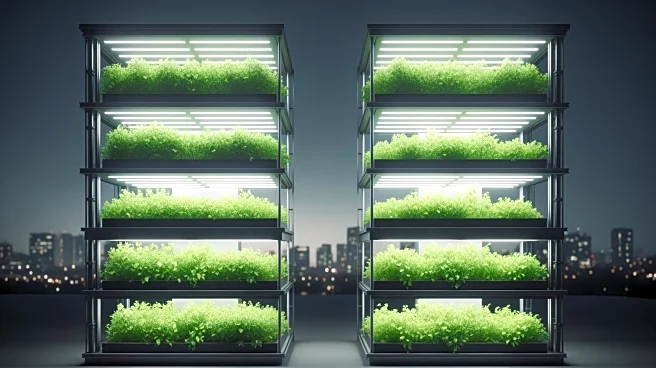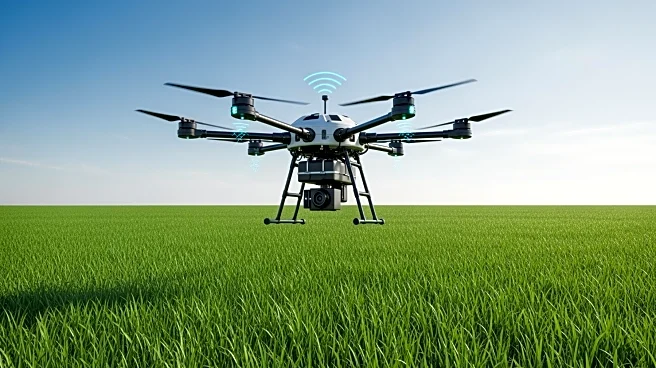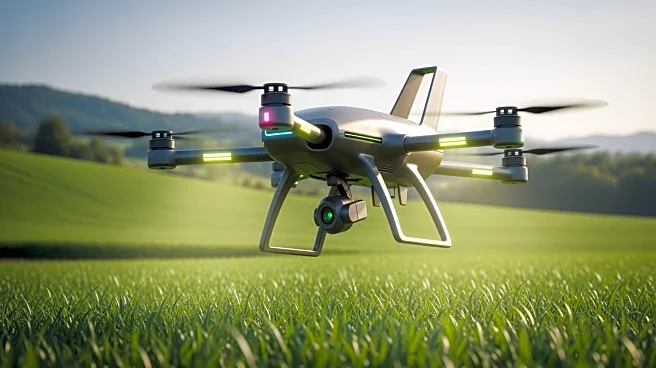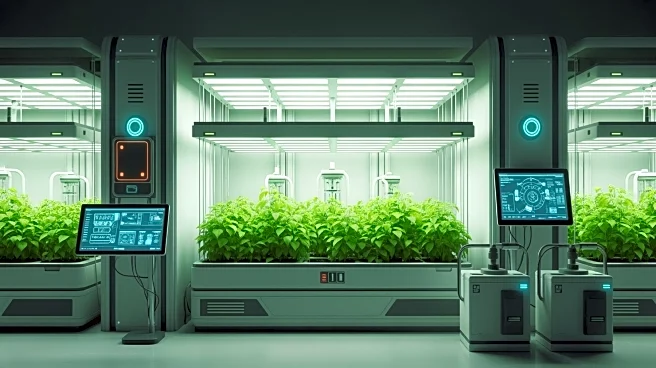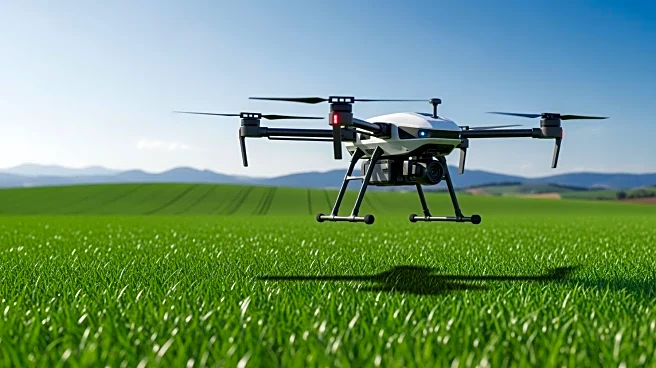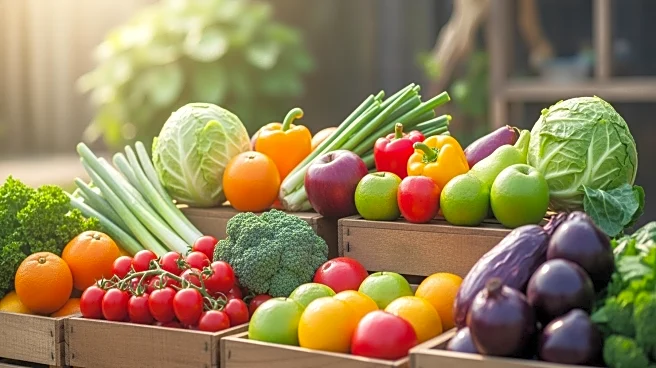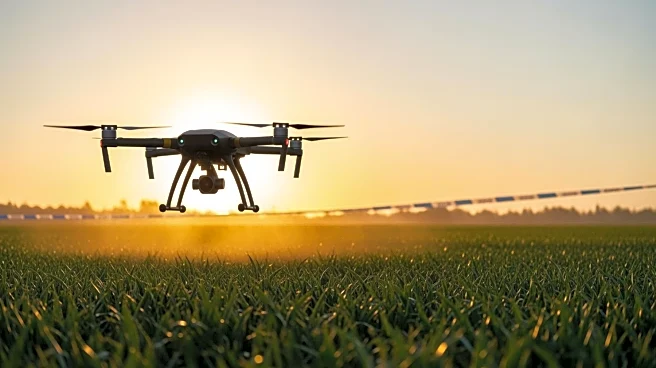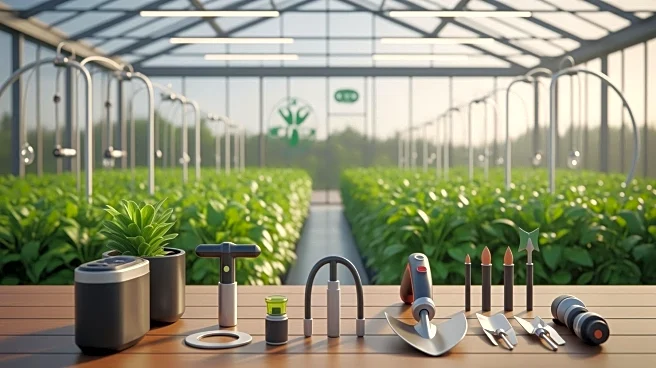What's Happening?
The global vertical farming market is expected to grow significantly, reaching USD 39.72 billion by 2032, according to a report by Maximize Market Research. This growth is driven by urbanization, technological
advancements, and the increasing demand for sustainable food production. Vertical farming allows for the cultivation of crops in controlled indoor environments, maximizing land use and reducing water and pesticide use. The market is led by North America, with significant growth also occurring in Europe and Asia-Pacific. Key players in the market include AeroFarms, Plenty, and Bowery Farming.
Why It's Important?
Vertical farming represents a transformative approach to agriculture, addressing challenges such as limited arable land and the need for sustainable food production. As urban populations grow, the demand for locally sourced, fresh produce increases, making vertical farming an attractive solution. The integration of technologies like LED lighting and smart sensors enhances efficiency and supports year-round cultivation. This market growth could lead to increased food security and reduced environmental impact, benefiting both consumers and the agricultural industry.
What's Next?
The vertical farming market is poised for rapid expansion, with companies focusing on automation and IoT integration to improve efficiency. Strategic partnerships and technological innovations are expected to drive competitive advantage. As the market grows, there may be increased investment in research and development, leading to further advancements in vertical farming techniques. Additionally, the expansion into new regions could provide opportunities for economic growth and job creation in the agricultural sector.
Beyond the Headlines
The rise of vertical farming also raises questions about the future of traditional agriculture and its role in food production. As vertical farming becomes more prevalent, there may be shifts in agricultural practices and land use. The focus on sustainability and resource efficiency could influence broader agricultural policies and consumer preferences. Additionally, the technology-driven nature of vertical farming may lead to increased collaboration between the agricultural and tech industries, fostering innovation and economic growth.
